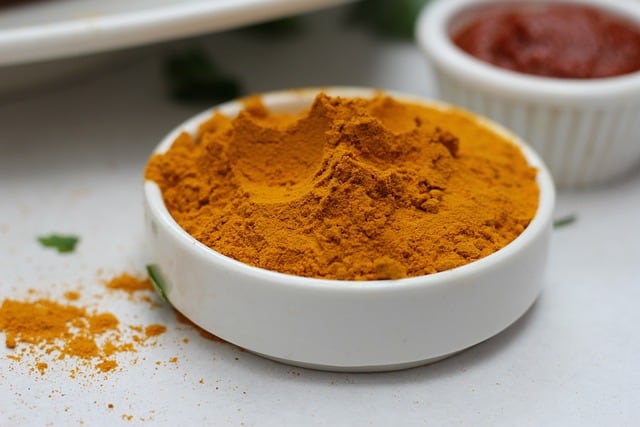You can definitely combine turmeric and cumin in your cooking. In fact, turmeric and cumin are commonly used together in many cuisines, especially in Indian, Middle Eastern, and Mediterranean dishes. These two spices complement each other well and can enhance the flavor and color of various recipes.
Benefits Of Combining Turmeric And Cumin In Food Dishes
Here are some reasons why combining turmeric and cumin can be a great idea:
- Flavor: Turmeric has a warm, slightly bitter taste, while cumin adds a nutty and earthy flavor. Together, they create a well-rounded and aromatic taste profile that enhances the overall flavor of the dish.
- Color: Turmeric provides a vibrant yellow-orange color, while cumin adds a touch of brown. This combination can give your dishes an appealing and appetizing appearance.
- Versatility: Turmeric and cumin are versatile spices that work well in both savory and vegetarian dishes. They are commonly used in curries, stews, rice dishes, roasted vegetables, and various spice blends.
- Health Benefits: Both turmeric and cumin are known for their potential health benefits. Turmeric contains curcumin, which has anti-inflammatory and antioxidant properties. Cumin is rich in antioxidants and may aid in digestion.
- Culinary Traditions: Many traditional cuisines have a long history of using turmeric and cumin together, making the combination a classic and trusted flavor pairing.
When using turmeric and cumin together, start with small quantities and adjust to your taste preferences. They are potent spices, and a little can go a long way. The combination can add depth and complexity to your dishes, making them even more enjoyable and flavorful.
Food Dishes That Combine Turmeric And Cumin
Turmeric and cumin are commonly used together in various food dishes, especially in Indian, Middle Eastern, and Mediterranean cuisines. Here are some popular dishes that combine these two flavorful spices:
- Indian Curry: Turmeric and cumin are essential components of many Indian curries, providing a rich and aromatic base for the dish. Whether it’s vegetable curry, chicken curry, or lentil curry, turmeric and cumin are often present in the spice blend.
- Middle Eastern Falafel: Falafel, made from ground chickpeas or fava beans, is a popular Middle Eastern dish. Turmeric and cumin are commonly used to season the falafel mixture, adding depth and warmth to the flavor.
- Moroccan Tagine: Moroccan tagines often feature turmeric and cumin, along with other spices, to create a rich and flavorful stew typically cooked in a clay pot.
- Indian Biryani: Biryani, a fragrant rice dish with meat or vegetables, is a staple in Indian cuisine. Turmeric provides the vibrant color to the rice, while cumin adds its distinct nutty flavor to the overall taste.
- Middle Eastern Hummus: Hummus, a popular Middle Eastern dip made from chickpeas, incorporates turmeric and cumin for an added depth of flavor.
- Spanish Rice: Spanish rice dishes, like paella, often include both turmeric and cumin to add a warm hue and a hint of spiciness to the rice.
- Moroccan Couscous: In Moroccan cuisine, couscous dishes are seasoned with a blend of spices, including turmeric and cumin, creating a delightful combination of flavors.
- Indian Lentil Dishes (Dal): Turmeric and cumin are frequently used in Indian lentil dishes (dal), providing a comforting and aromatic flavor to these nutritious dishes.
- Mediterranean Roasted Vegetables: When roasting vegetables, a combination of turmeric and cumin can elevate the flavors and add an appealing color to the dish.
- Indian Spice Blends: Turmeric and cumin are integral components of popular Indian spice blends like garam masala and curry powder, enhancing the flavor of various recipes.
These are just a few examples of dishes that beautifully combine turmeric and cumin. Their complementary flavors and vivid colors make them an excellent duo for a wide range of savory dishes, bringing a touch of warmth and depth to your cooking.
Turmeric And Cumin Comparison
Here’s a comparison of turmeric and cumin in table form to illustrate what each offers:
| Property | Turmeric | Cumin |
|---|---|---|
| Source | The root of the turmeric plant (Curcuma longa). | The seeds of the cumin plant (Cuminum cyminum). |
| Flavor | Warm, slightly bitter, and earthy. | Nutty, earthy, and slightly peppery. |
| Color | Bright yellow to yellow-orange. | Brownish or amber seeds. |
| Culinary Use | Widely used in savory dishes, including curries, rice dishes, and soups. Often used in pickling as well. | Popular in Indian, Middle Eastern, and Mexican cuisines. Adds flavor to various dishes, including curries, falafel, and spice blends. |
| Aroma | Mild with a subtle peppery scent. | Distinctive and aromatic. |
| Health Benefits | Contains curcumin, known for its anti-inflammatory and antioxidant properties. | Rich in antioxidants and may aid digestion. |
| Staining Properties | Can stain dishes, clothes, and surfaces. Be cautious when using it. | Generally does not have strong staining properties. |
| Regional Origins | Native to South Asia and widely cultivated in tropical regions. | Indigenous to the eastern Mediterranean and western Asia. |
| Popular Spice Blends | Turmeric is a key ingredient in curry powder and various spice blends. | Cumin is often used in chili powder and garam masala. |
| Other Uses | Used as a natural food coloring and in traditional medicine. | Also used for pickling, and cumin oil is used in aromatherapy. |
| Complementary Spices | Commonly combined with spices like cumin, coriander, and ginger in Indian and Middle Eastern dishes. | Often paired with spices like coriander, cinnamon, and paprika in various cuisines. |
Both turmeric and cumin are versatile and beloved spices used in various culinary traditions around the world. Each brings its unique flavor and color to dishes, making them indispensable in many savory recipes.

